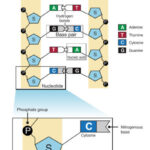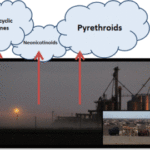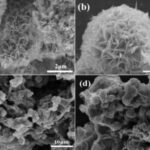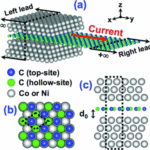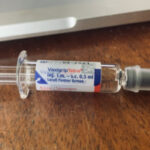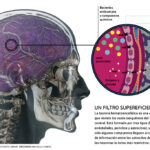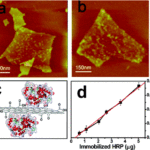October 4, 2024 Scientific alternative studies
COVID-19 vaccination increased the risk of depression, anxiety, dissociative, stress-related and somatoform disorders, and sleep disorders, while decreasing the risk of schizophrenia and bipolar disorder.
Scientific articles. The results only confirm what has long been known
Hong Jin Kim, Min-Ho Kim, Myeong Geun Choi, Eun Mi Chun (2024). Psychiatric adverse events following COVID-19 vaccination: a population-based cohort study in Seoul, South Korea : https://doi.org/10.1186/s12903-023-03798-y
There is now clear and indisputable evidence showing that the vaccine poison causes psychiatric side effects (in addition to the known physical ones).
On the other hand, it has been known since 2017 how reduced graphene oxide has the potential to transport drugs into the brain or to open the blood-brain barrier and allow other vehicles to transport the drugs themselves into the brain” (Dr. Da Cruz-Höfling).
The results obtained by the Korean researchers only confirm what has been known for a long time.
Evidence suggests an increased risk of psychiatric manifestations following viral infections, including coronavirus disease 2019 (COVID-19).
However, psychiatric adverse events (AEs) after COVID-19 vaccination, which were documented in case reports and case series, remain unclear.
The aim of this study was to investigate psychiatric AEs after COVID-19 vaccination in a large population-based cohort in Seoul, South Korea.
We recruited 50% of the Seoul resident population randomly selected from the Korean National Health Insurance Service (KNHIS) claims database on January 1, 2021.
Enrolled participants (n = 2,027,353) from the Korean National Health Insurance Service claims database were divided into two groups according to COVID-19 vaccination.
Cumulative incidences per 10,000 of psychiatric AEs were assessed at one week, two weeks, one month, and three months after COVID-19 vaccination.
Hazard ratios (HRs) and 95% Confidence interval (CIs) of psychiatric AEs were measured for the vaccinated population.
The cumulative incidences of depression, anxiety, dissociative, stress-related and somatoform disorders, sleep disorders, and sexual disorders at three months after COVID-19 vaccination were higher in the vaccinated group than in the unvaccinated group.
However, schizophrenia and bipolar disorder had a lower cumulative incidence in the vaccinated group than in the unvaccinated group.
Depression (HR [95% CI] = 1.683 [1.520-1.863]), anxiety, dissociative, stress-related, and somatoform disorders (HR [95% CI] = 1.439 [1.322-1.568]), and sleep disorders (HR [95% CI] = 1.934 [1. 738-2.152]) showed increased risks after COVID-19 vaccination, whereas the risks for schizophrenia (HR [95% CI] = 0.231 [0.164-0.326]) and bipolar disorder (HR [95% CI] = 0.672 [0.470-0.962]) were reduced.
COVID-19 vaccination increased the risk of depression, anxiety, dissociative, stress-related and somatoform disorders, and sleep disorders, while decreasing the risk of schizophrenia and bipolar disorder.
Therefore, special caution should be exercised when administering additional COVID-19 vaccinations to populations at risk for psychiatric adverse events.
Heba Fathy, Hassan Haroun, Mona Riad (2024). The optical behavior of nano filled resin composite loaded with graphene oxide nanoparticles. Doi : https://doi.org/10.1186/s12903-023-03798-y
A study of the effect of incorporating graphene oxide nanoparticles (GONPs) at different concentrations into a resin composite of different thicknesses on color modulation.
It was verified that the dispersion of graphene oxide nanoparticles has a detectable effect on the color change of the resin composite.
Only when the thickness of the resin composite is less than 1 mm, there is an imperceptible effect on its color.
Francesco Inchingolo, Angelo Michele Inchingolo, Giulia Latini, Giulia Palmieri, Chiara Di Pede, Irma Trilli, Laura Ferrante, Alessio Danilo Inchingolo, Andrea Palermo, Felice Lorusso et al.(2023) Application of Graphene Oxide in Oral Surgery. Doi : https://doi.org/10.3390/ma16186293
A review of the major research conducted in the last 10 years on the potential use of graphene in dental surgery.
Cuong Hung Luu, Giang Nguyen, Thanh-Tuyen Le, Thanh-Mai Ngoc Nguyen,V. H. Giang Phan, Mohanapriya Murugesan, Ramya Mathiyalagan, Lu Jing,Gopinathan Janarthanan, Deok Chun Yang et al. (2022). Graphene Oxide-Reinforced Alginate Hydrogel for ControlledRelease of Local Anesthetics : Synthesis, Characterization, and Release Studies. Doi : https://www.mdpi.com/2310-2861/8/4/246
Over time, lidocaine has become an established local anesthetic in the treatment of pain.
However, several side effects limit its use.
Therefore, a formulation consisting of sodium alginate (SA) and graphene oxide (GO) was developed to prolong the release of lidocaine over an extended period of time.
Xiaojing Li, Xin Liang, Yanhui Wang, Dashan Wang, Minhua Teng, Hao Xu,Baodong Zhao, Lei Ha. (2021). Graphene-Based Nanomaterials for Dental Applications : Principles, Current Advances, and Future Outlook. Doi :10.3389/fbioe.2022.804201
With the recent development of nanotechnology, graphene and its derivatives immediately attracted great attention from scientific researchers due to their excellent physicochemical properties, morphology, biocompatibility, multi-differentiation activity, and antimicrobial activity.
Recent advances in their applications in the field of dentistry are presented in this study.
Abbas Kadhim Hassan, Habib Hamidinezhad, Ehssan Al-Bermany, (2024). Antibacterial Activity and Optical Behavior for Restoration of Micro and Nano Dental Fillers Using Functional Graphene Nanosheets with Polymethyl Methacrylate. Doi : 10.26599/NBE.2024.9290075
Graphene polymer-based nanocomposites have a significant impact on dental filling materials and antibacterial applications.
Polymethylmethacrylate (PMMA) has been used to improve the properties of nano- and hybrid dental fillings reinforced with synthetic graphene oxide (GO).


